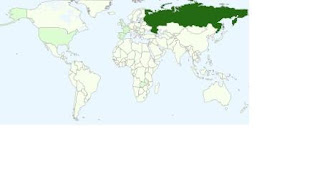The
Wide Awake Loons is now an audio book at Amazon, Audible, and iTunes.
Promo codes are available for the free book at Audible. To obtain one, go to the Wide Awake Loons Facebook page, please like it, and press the Send Message button. There you can ask for the promo code.
I
had to wonder why I chose The
Wide Awake Loons as my first audio book. It was a favorite
book to write but it did have an unusual spectrum of voices. At ACX
where books can be turned into audiobooks, I was surprised to receive
more auditions the first week than expected. It was hard to choose
between them.
I
felt very fortunate to have Aven Shore as narrator since she has more
than sixty audio books to her credit. She lives in Canada where loons
can be as familiar as they are in Maine and Minnesota. At her blog , she gives useful
information about the narration process. While working on The Wide Awake Loons, she wrote:
“It’s a delightful dual POV story, of a little girl at her parents’ cottage, trying to get her canoe permissions extended, and the loon couple raising their loonlings on the lake in the wildlife community. Sometimes, their stories intersect! Dramatic, sensitive, well-written, FUNNY, and realistic. This author knows her loons.
I’m having a ball voicing all the characters - the dramatis persona includes the regal and superior loons, Chip Chap the chipmunk, Spotted Croak the mink toad, the gulls, the pine siskins, and more.”
An
audio book seems like quite a challenge for performance stamina. As a
flute player, I know the difference between playing Bach solo and
playing flute parts in an ensemble. Take a deep breath because there
are few breaks. I am impressed at the ability it requires to change
voice between different characters and the narrator's. It seems
similar to a ventriloquist's talent. Anyway, I would not attempt
narration of my own books.
I
began to read after listening to Peter Rabbit repeatedly and
eventually pointing at the words as they were said. Teachers and
students read aloud as listeners follow text. But when it comes to
longer stories, chapter books, and novels, children have to leap into
reading all alone. At school, teachers might read aloud a longer book
but it has to please the crowd. An audio book can be a personal choice
and it can also be a reading method where progress does not feel
intimidating.
When
I think of the advent of the children's novel, I visualize a hearth
and family members sitting around it, the way they sat around a
television later on, one of them reading aloud. This would account
for the difficulty of the 19th century juvenile novel and the fine
plotting that made it family entertainment. If a child didn't
understand a word, they could ask. Discussion probably aided
comprehension. With an audio book, a child can follow an e-book or
paperback, read along or dip in and out. To me, this all provides an enjoyable learning experience, and one with options. Or there is just
the enhancement of the dramatic voice enlivening the story.













